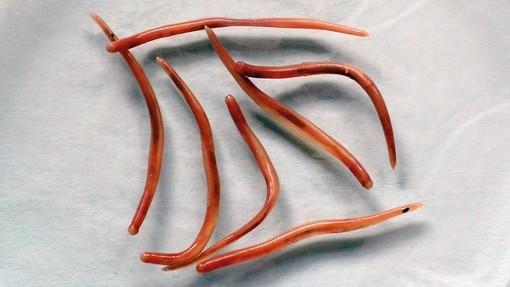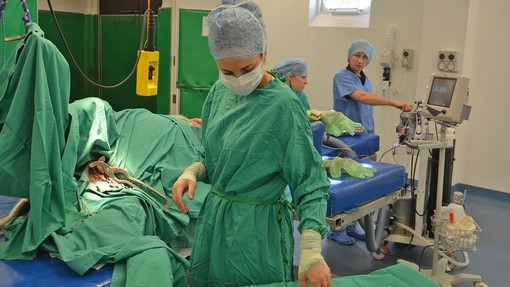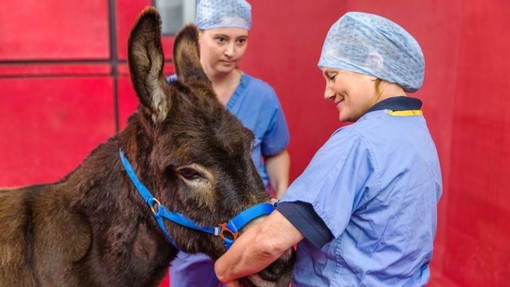Pathophysiology
The condition of hyperlipidaemia is defined by elevated plasma triglycerides (TG), potentially leading to the clinical condition of hyperlipaemia which is characterised by the fatty infiltration of organs and subsequent organ dysfunction (usually liver and/or renal).
This elevation in plasma triglycerides is a consequence of a series of events, arising during periods of negative energy balance (which can be initiated by the risk factors outlined above). In such periods the activity of hormone sensitive lipase (HSL) is increased, mobilising adipose tissue and a dramatic increase in lipolysis occurs. Concurrently, there is peripheral insensitivity to the action of insulin, which normally inhibits lipolysis.
The net effect of increased HSL and decreased insulin sensitivity results in levels of circulating free fatty acids (FFAs) that are increased beyond the liver’s ability to process them via oxidative pathways. Unlike in bovines, equidae have limited ability to convert non-esterified fatty acids into ketones.
Instead, the liver re-esterifies the FFAs to TGs and very low density lipoproteins (VLDLs); release of this TG and VLDL into the bloodstream leads to hyperlipidaemia. If this cycle continues and there is decreased peripheral clearance of VLDL, hyperlipaemia results. To counteract the cycle the initiating cause should be identified and treated and the negative energy balance must be corrected. This process can be summarised in the diagram below:

Factors that increase activity of HSL:
- ACTH
- glucocorticoids
- catecholamines
- glucagon
- growth hormone; and
- thyroid hormone
Obese animals may have a higher resting TG level and are less sensitive to insulin. Pregnancy and lactation reduce insulin sensitivity.
Clinical signs
- dullness, lethargy, inappetence when offered food/“sham” eating and drinking (vague clinical signs can be seen in early stages)
- cloudy to milky serum/plasma as severity increases
- depression
- anorexia
- halitosis, characteristic smell associated with ileus
- abdominal discomfort; may be related to stretching of the liver capsule
- ileus
- congested mucous membranes, increased capillary refill time
- dry mucous covered faeces/dry faecal balls
- muzzle and head oedema (after prolonged periods of dullness)
- tachycardia
- tachypnoea
- ataxia
- hepatic encephalopathy
- recumbency
- death
Clinicians should take account of other biochemical and haematological parameters, including blood glucose levels and ACTH levels when providing a prognosis and forming a therapeutic plan.
Treatment
Consider severity of hyperlipaemia and prognosis (for both hyperlipaemia and any primary disease) before starting treatment. Please note that the following is a guide only and individual cases may vary in their prognosis and treatment approaches eg a donkey with serum triglycerides of 10mmol/l which gets very distressed by tubing but is still eating may fare better with increased meal provision rather than tube feeding.
| Serum triglyceride | Approach to treatment | Prognosis |
| 3-8 mmol/l | Encourage voluntary feeding, glucose drenches. | Triglyceride level should restore quickly to normal if feeding continues. |
| 8-10 mmol/l | Nasogastric intubation. | Good. |
| 10-15 mmol/l | Nasogastric intubation +/- IV fluids. | Fair if triglyceride levels are reduced promptly. Treat aggressively. |
| 15-20 mmol/l | Nasogastric intubation and IV fluids. | Guarded. |
| >20 mmol/l | Intensive IV fluids. | Poor. |
Prognosis is improved if there is voluntary food intake. Encourage with treats (ginger biscuits, grated apple/carrot and jam sandwiches), grazing, hedgerow trimmings or hand feeding. Owner attitude is vital. Prognosis improves if the owners are willing to hand feed, oral drench and administer oral medications.
Drench using a 50ml drenching syringe at least 3-4 times a day. Dissolve 1-2g/kg bwt dextrose powder in warm water (try flavouring if possible). Small volumes as often as possible are ideal. Dextrose can also be added to normal feedstuffs if appetite is present. Avoid any extra stress to the affected animal by keeping a companion close by. Assess the likely stress of hospitalising a patient; it may be preferable to treat at home. Corticosteroids are always contraindicated.
Nasogastric intubation
Provided that ileus is absent, fluids are ideally administered via nasogastric intubation. A pony or foal size tube is best. At The Donkey Sanctuary our standard basic recipe is as follows:
- 2-3L warm water (approx. 1L/75kg body weight)
- electrolytes (e.g. Effydral™ or Lectade™)
- 120g glucose powder (note that Lectade™ contains approx. 50g glucose)
- 250-500g Ready Brek (top tip – add the Ready Brek to the water at the last minute to prevent excessive thickening and blockage of the nasogastric tube. Stir well)
- any other oral medication to save drenching later
Intravenous fluids
Maintenance rate is 50ml / kg / 24hr; this rate may be adjusted depending on the patient and clinical circumstance. As it is not always possible to run IV drips continuously in a field situation, at The Donkey Sanctuary we often use a bolus of 3-4 L isotonic fluids (adjust according to actual estimated weight of patient) given over 60-90 minutes and repeated 2-3 times daily. The drip bags are spiked with 40% glucose solution for injection and Duphalyte®, both at 1-2ml /kg. As with any f luid therapy, monitor carefully for signs of fluid overload.
The table below is a rough guide only and does not take account of specific primary disease processes or electrolyte imbalances:
| Weight of donkey | Max fluid amount per 24 hours (IV + NG) | Glucose / Duphalyte volume per IV bolus |
| 150kg | 9L | 150-300ml |
| 175kg | 10.5L | 175-350ml |
| 200kg | 12L | 200-400ml |
Other sources describe use of 5% dextrose crystalloid solutions. The reader is directed towards the references section for further information.
Adjunctive treatments
NSAID’s
Flunixin meglumine at a minimum anti-endotoxic dose [0.25mg/kg] every 6-12 hours. With primary pyrexic, inflammatory or painful cases, administer the usual dose of 1.1mg/kg.
Anti-ulcer medication
Most cases showing inappetance will benefit from anti-ulcer medication as it is a common finding at post-mortem in elderly or debilitated and hyperlipaemic donkeys.
- Omeprazole is the drug of choice, given once daily at 4mg/kg.
- Sucralfate can also be given at a dose of 10ml orally every 8-12 hours.
Multivitamins
If deemed applicable, oral general-use equine multivitamin preparation dosed at bodyweight. Injectable multivitamins can be given, but may add to stress. If the donkey is eating then balancers may be used to provide vitamin supplementation.
Use of insulin and total parenteral nutrition may be applicable in hospitalised, severely affected patients. Please contact us or see the references for further advice.
Ongoing care
After successful resolution of a hyperlipaemia case any underlying non–urgent disease processes or risk factors, such as dental disease, obesity, inappropriate diet and parasitism should be discussed, treated and managed as appropriate.
References
- Hughes, K.J., Hodgson, D.R, Dart, A.J. (2004). Equine Hyperlipaemia: A review. Aus Vet J 82; 136-142.
- Durham, A.E., Thiemann, A.K., (2015). Nutritional management of hyperlipaemia. Equine Vet Educ. 27 (9), 482-488




